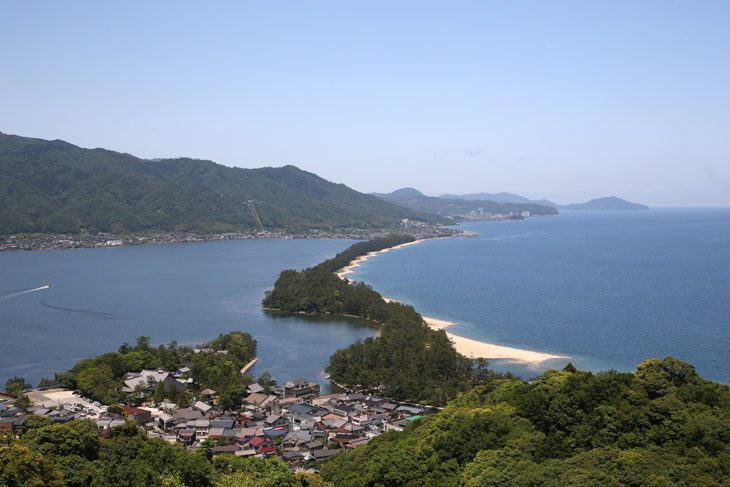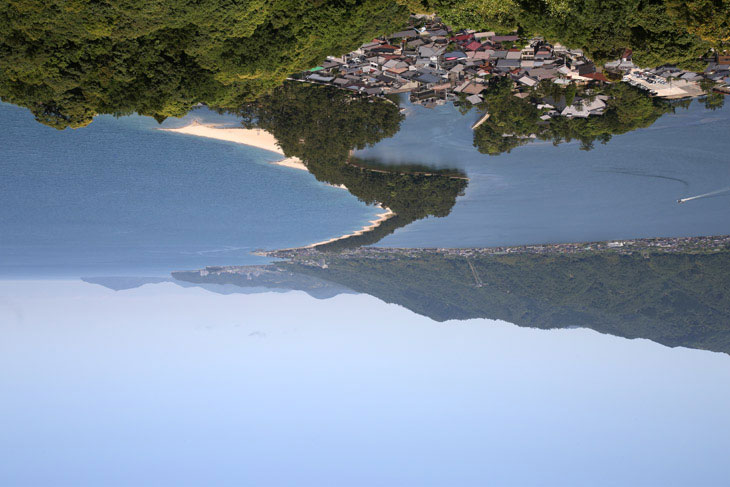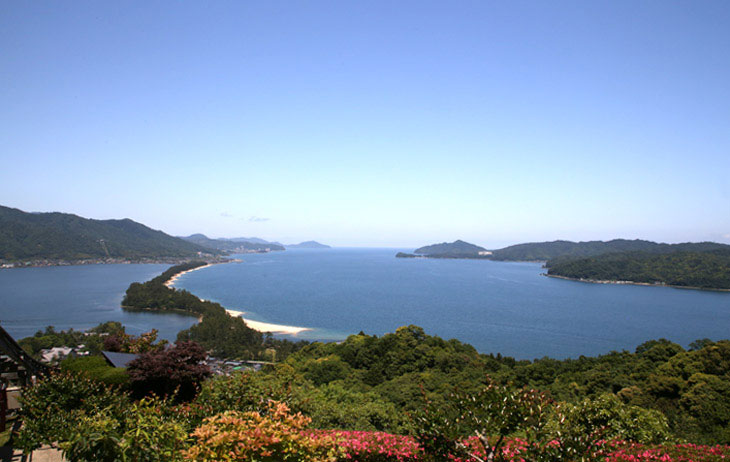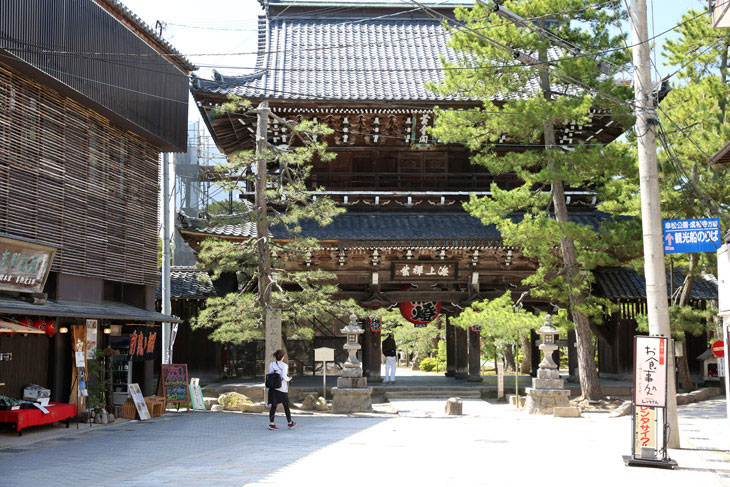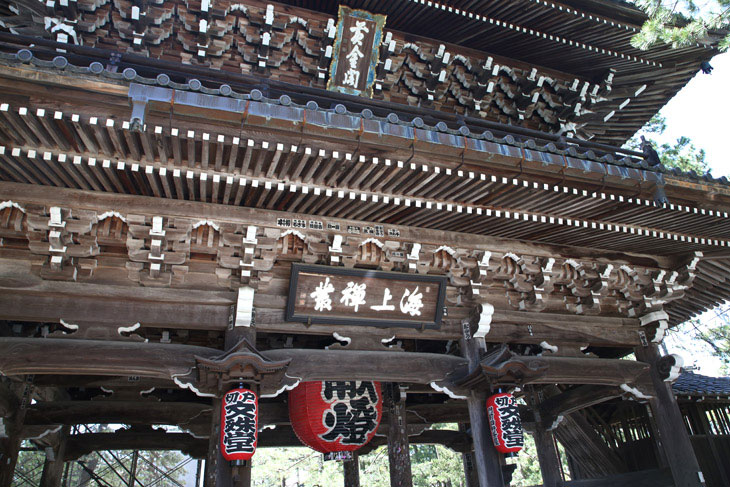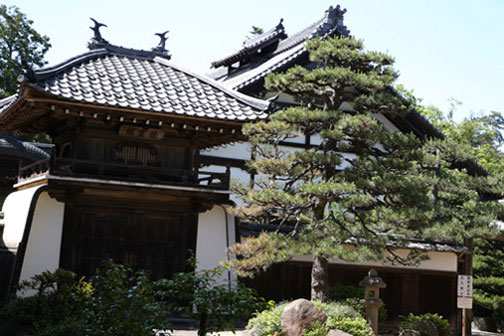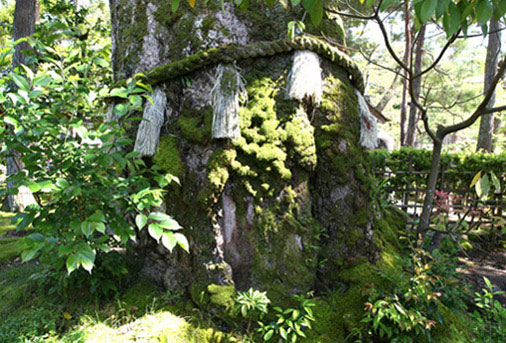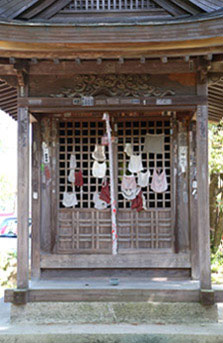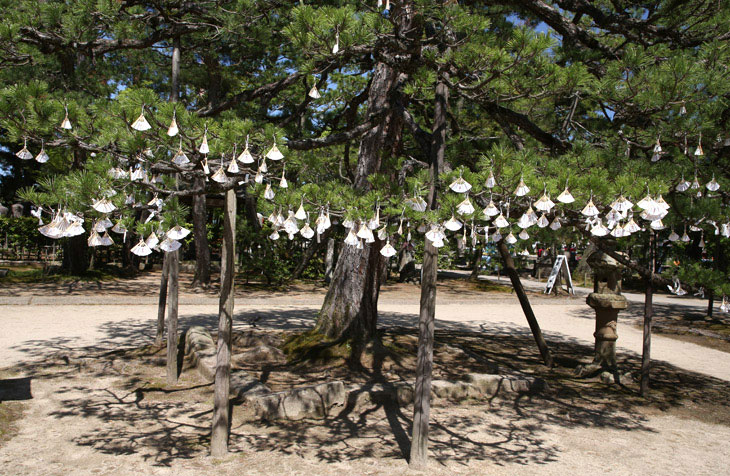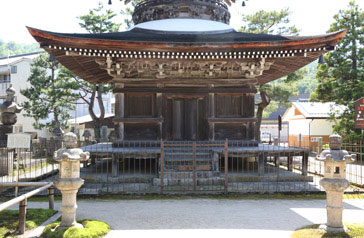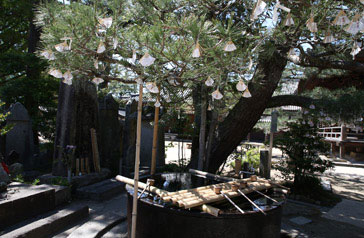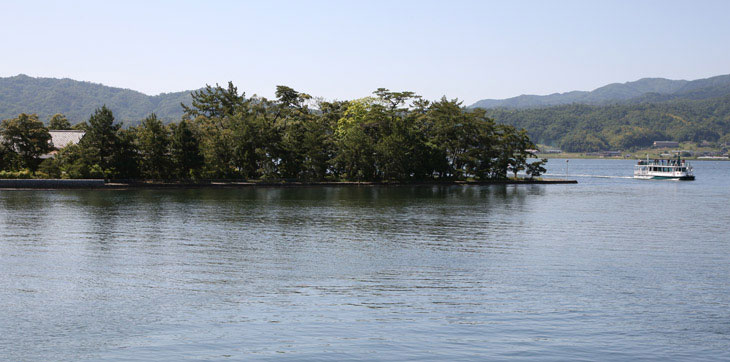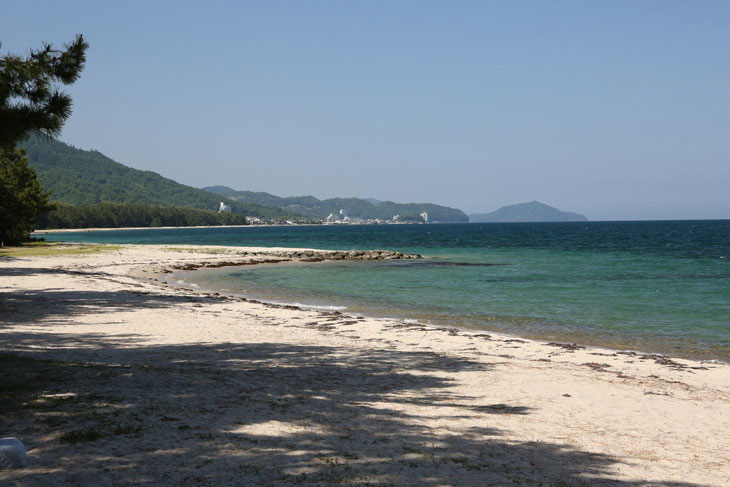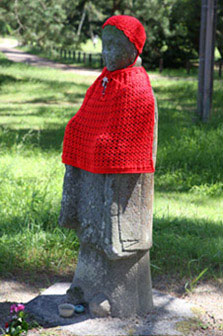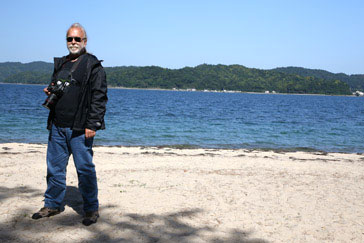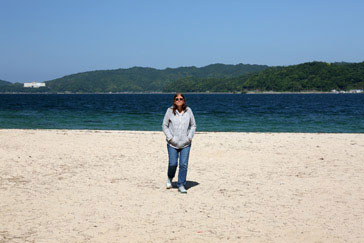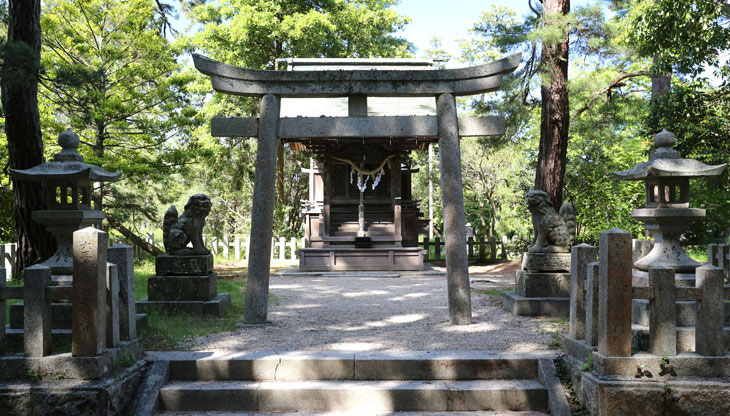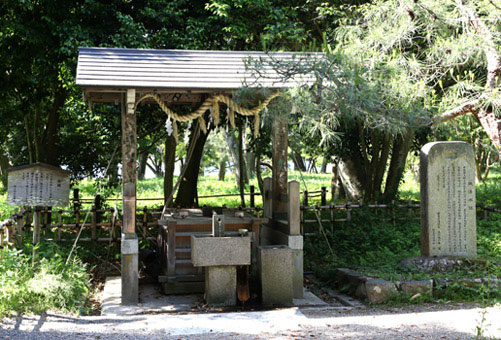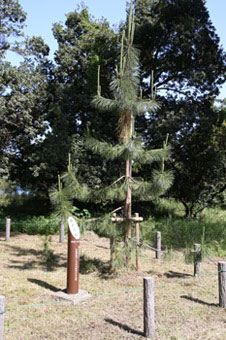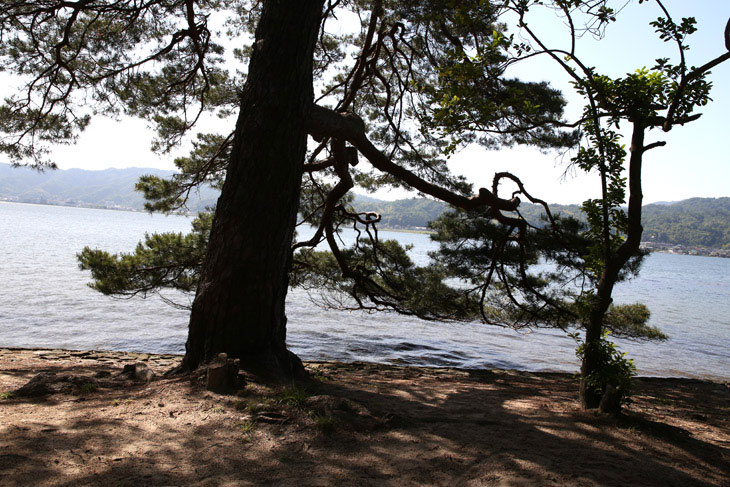Amanohashidate
Three places in Japan are often identified as being the most scenic. We had already visited one in
2011 - the floating torii at Itsukushima Shrine on the island of Miyajima. When we were planning
this trip, I stumbled upon a web page put up by someone who had visited another one of the three
scenic spots - Amanohashidate. Going there sounded like the sort of thing we like to do so we
tentatively added it to our agenda.
Getting to Amanohashidate is not exactly easy. Japan Railways will get you most of the way, but the
tracks between Fukuchiyama and Amanohashidate belong to a company called the Kyoto Tango Railway.
You can board the JR Hashidate Limited Express in Kyoto and that train will take you all the way to
Amanohashidate, but the crew will change at Fukuchiyama and a conductor will come through and collect
additional money. No such limited express was available for the return. We had to buy tickets to
Fukuchiyama at the Kyoto Tango Railway station in Amanohashidate and change to a JR train there. It
doesn't sound difficult now, but figuring all of that out was confusing and frustrating and the $15
or so per person one way that is charged for a reserved seat between Fukuchiyama and Amanohashidate
seems a bit much for a fairly short ride. We had no choice about paying the conductor $30 on the
almost empty Hashidate Limited Express because we were sitting in seats we had reserved with our
JR pass, but buying tickets at the station was confusing and I balked at paying extra for a reserved
seat. Not reserving a seat saved us about $15 which is pretty insignificant when you consider all
rail travel costs, but at that point I was determined not to pay the Kyoto Tango Railway any more money
than necessary.
There was no sense wasting a beautiful day feeling annoyed so we set our frustrations aside and we
wandered up the street to Amanohashidate Viewland. You can purchase a ticket which is good for a
roundtrip on either the chairlift or ropeway to the top of Mt. Monju. Walt preferred to go up on
the ropeway. A car which looked pretty much full was sitting there so we stood to the side to wait
for the next one, but we were told to enter so we squeezed in and up we went.
The view from Mt. Monju is called "Hiryukan", and it is said to resemble a dragon climbing into
the sky.
If you are having trouble seeing the dragon asending into the heavens, perhaps it will help to turn
the picture upside down. Some people like to position themselves with their back to the view, bend
down, and look through their legs. This is called "Matanozoki". If you still can't see the dragon,
maybe you will have better luck imagining a pathway to heaven, which is another way the view is
often described.
There is a small amusement park at the top and a metal tower you can climb if the top of Mt. Monju
isn't high enough for you.
I opted to avoid the cloustrophobic ropeway car and return to the bottom on the chair lift. It felt
a little unstable, but I saw several parents sitting in the chairs with their babies and toddlers
in their laps.
There is another viewing spot on the other side of the sandbar in Kasamatsu Park, but we didn't have
time to visit it.
We had some lunch in a cute little cafe and began walking towards the sandbar. On the way, we stopped
to explore Chionji Temple. The temple gate is the largest in the Tango area. Construction of the gate
began in 1762 and it took 7 years and 8,780 carpenters to complete its construction.
Many students and their families come here to pray for help with their studies because it is believed
that you can gain wisdom by visiting this temple.
A more recent trend is the sale of fans that are supposed to increase wealth. People tie them to tree
branches on the temple grounds.
After leaving the temple, we began walking across the sandbar which connects the two sides of the town.
It's just over two miles long, and it is home to about 8000 pine trees, many of them with names. The path
is wide and, of course, flat so it's a very pleasant walk through the trees past the mostly empty beaches.
We encountered the atmospheric Amanohashidate Shrine about halfway across the sandbar. One of Japan's most
famous springs sits near the shrine. Although it is right by the beach, the water is fresh.
It was time to head back to the station for our return trip to Kyoto. As you may recall, I had refused to
buy reserved seats to Fukuchiyama as a matter of principal, so we got in line early. In fact, we were the
first ones, but other people soon began to line up behind us. After awhile, a Kyoto Tango Railway employee
came out and rearranged us at a different spot on the platform. We managed to stay near the front of the
line, but then he inexplicably led us all back to where we had first stood and we ended up near the back.
My frustrations were rising again, but a Japanese couple began protesting that we had been first and that
we should be at the front of the line and other people began agreeing with them. Soon we were all re-arranged
back in our original positions more or less. Once again my feeling that people are always looking out for us
in Japan was reinforced.
By the way, in case you are wondering, the third scenic view is the pine tree covered islets in Matsushima
Bay north of Tokyo. Maybe we'll make it there next trip.
